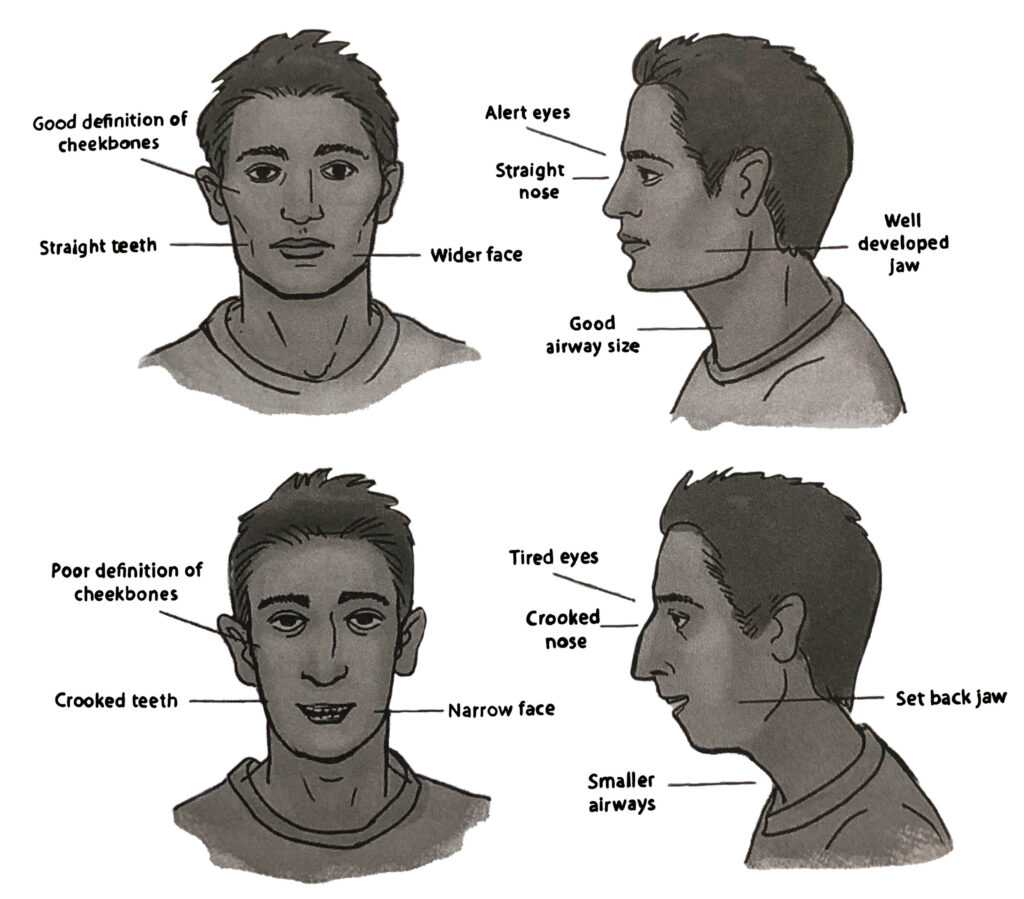Mouth breathing causes many health issues.

This sketch shows the basic differences in facial development of a nose breather (top sketch) and mouth breather (bottom sketch).
The nose is supposed to be used for breathing because it filters, warms, and adds nitric acid to the air, which is important for the lungs to process the air properly.
The nose is very important for breathing since the sinuses help create nitric oxide. Nitric acid is a gas that dilates blood vessels in the body and helps increase oxygen uptake in the lungs. Because nitric acid is made in the sinuses, breathing through the mouth and circumventing the nose, results in 10-20% reduction of oxygen intake. In order to compensate for this lack, mouth breathers are prone to engage in shallow, more rapid breathing (hyperventilation). Since mouth breathing does not take it sufficient air, when people exhale more than they inhale, this may also trigger panic attacks.
In studies on monkeys, plugging the nose during facial development significantly retarded facial growth.
Partial list of issues that mouth breathing cause:
Crooked nose (deviated septum), crooked teeth because mouth breathing causes the palate to form too small for the teeth, long face, asthma, sleep apnea, sinus infections, poor sleep, dry mouth (which can also cause cavities), snoring, swollen tonsils, nasal congestion, loud breathing, a sense that not enough air is coming in, and snoring. Oral breathing also alters posture and the strength of the speech organs.
Holistic Drs Joseph Mercola and Christiane Northrup have said that they sleep with tape on their lips at night to prevent mouth breathing when sleeping. 3M micropore tape can be purchased on Amazon to be used at night while a person is trying to switch from mouth to nose breathing. (Coconut oil can be used in the morning to take off any sticky toxic residue.)
It is very important to make sure a child’s mouth is closed during the day and at night, besides while talking. The tongue is a very powerful muscle and it must rest at the roof of the mouth. It is this tongue position that will enable proper upper palate development and attractive face structure (round and chiseled instead of long). When a person switches to nose breathing, the face and nose shape will change (especially if it is a younger child) and the rest of the breathing issues will also resolve. The face structure is formed rapidly between ages 7-11, so it is very important to make sure a child does not mouth breathe for proper facial muscles and straight teeth to develop.